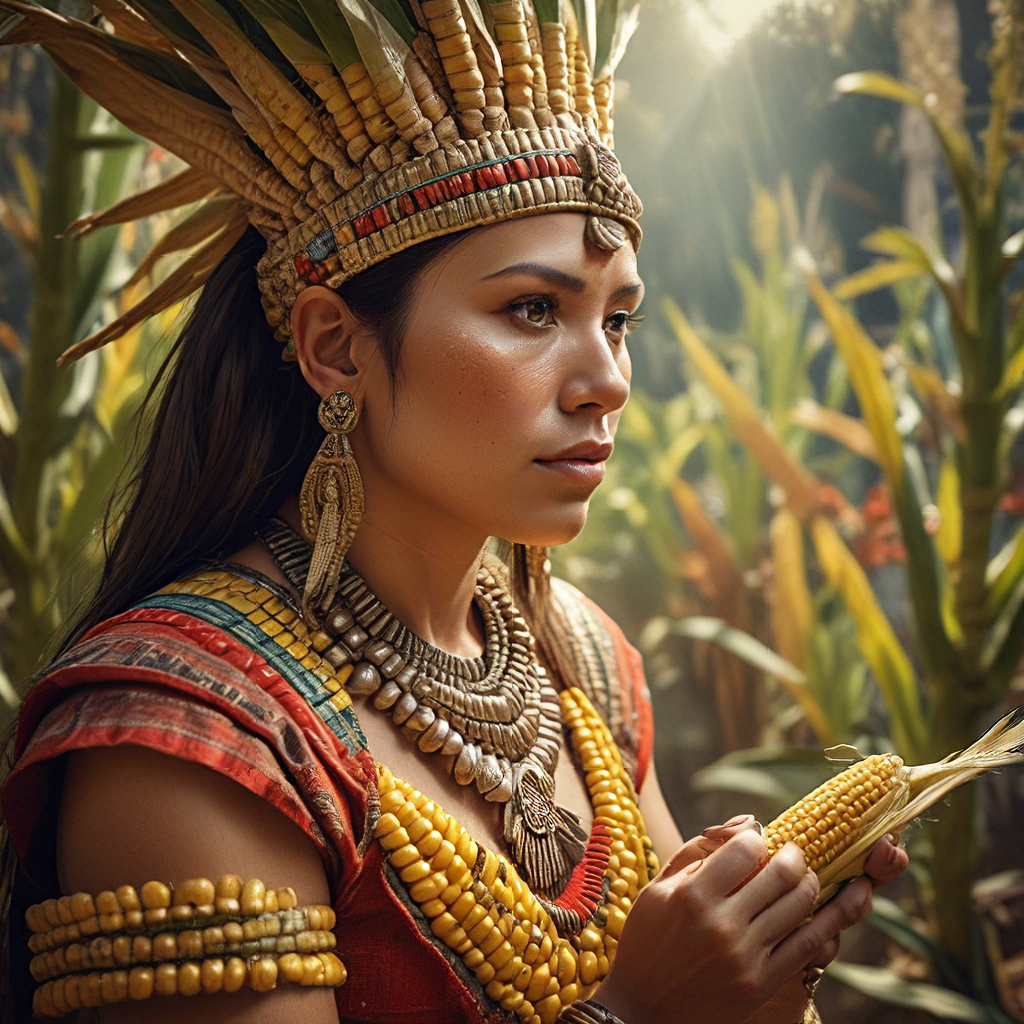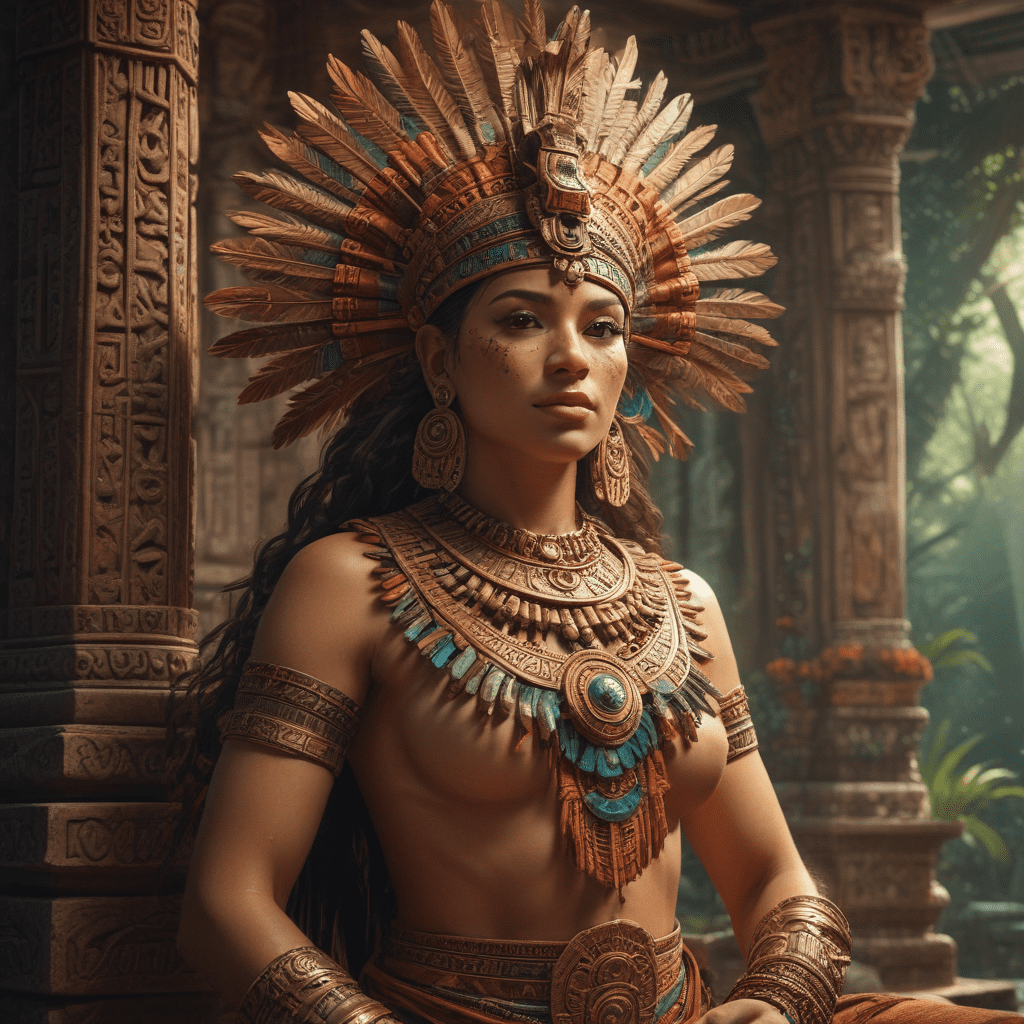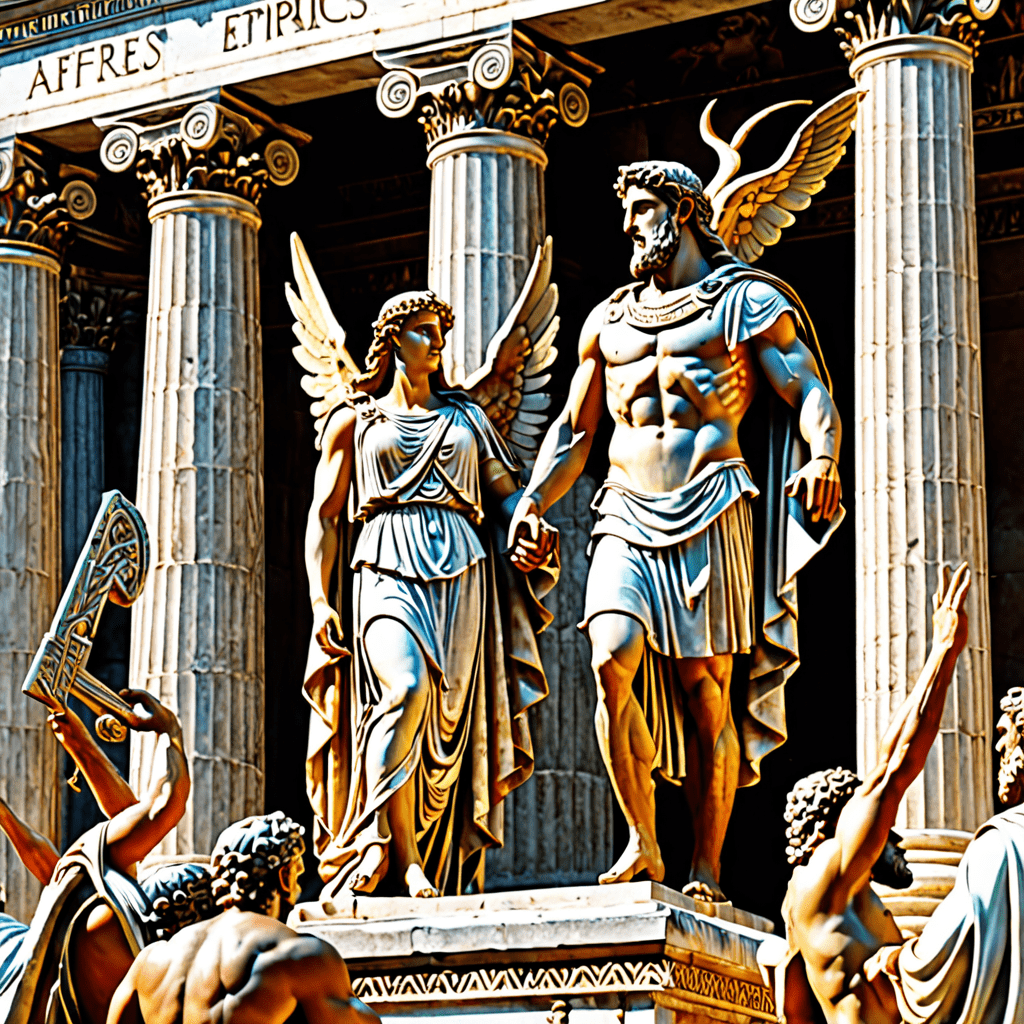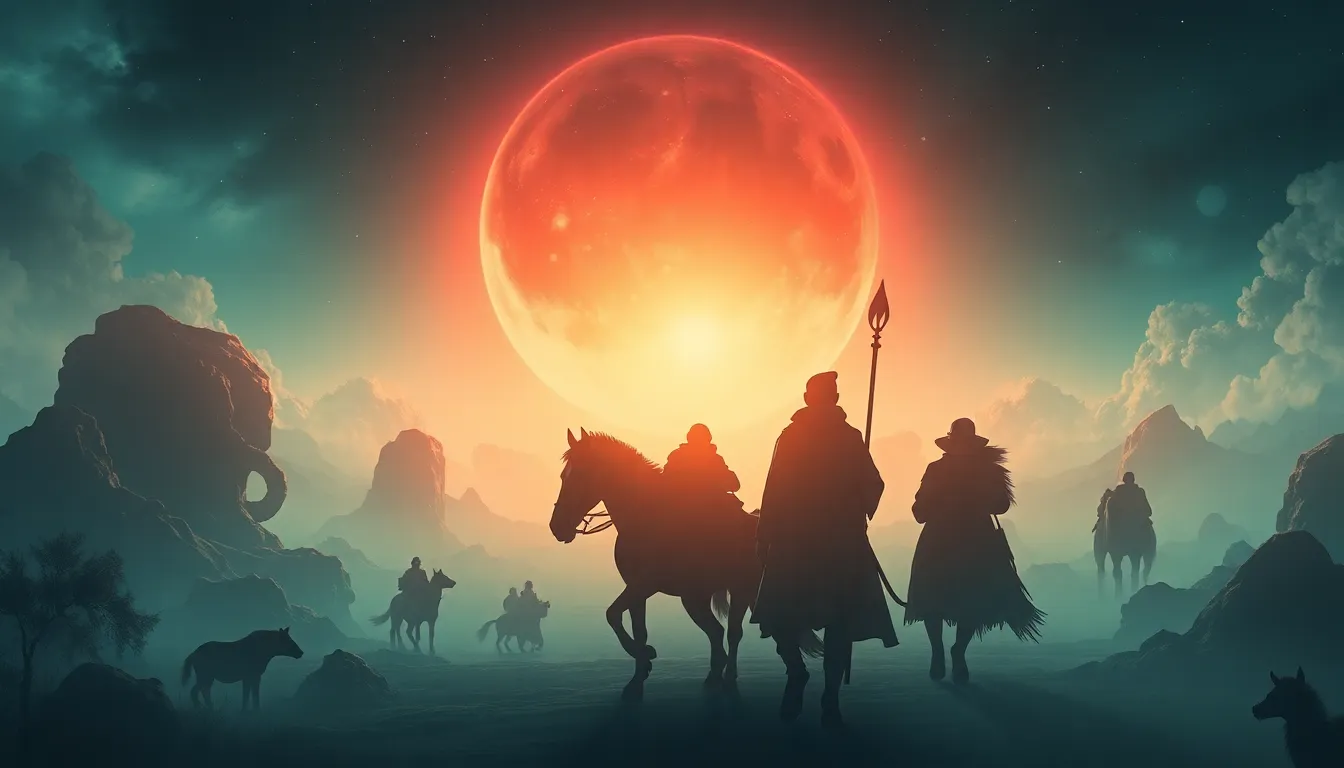The Aztec Creation Myth and the Role of Corn
The Aztec civilization, known for its advanced culture and complex social structure, revered corn as a sacred and vital element of their existence. Corn, known as maíz in Nahuatl, the Aztec language, played a central role in their mythology, agriculture, and daily life. Its significance extended beyond a mere food source, encompassing deep spiritual and symbolic meanings that permeated Aztec beliefs and practices.
At the heart of Aztec mythology lies the creation myth, which recounts the origin of the world and humanity. In this myth, the gods, after several failed attempts, successfully crafted humans from maize. This act signifies the divine origin of humanity and the profound connection between humans and corn. The story emphasizes the vital role corn played in sustaining life and the importance assigned to it within the Aztec worldview.
Corn as a Gift from the Gods
The Aztec creation myth emphasizes the divine origin of corn. The god Quetzalcoatl, often associated with the morning star and the wind, is credited with bringing corn to humanity. According to legend, Quetzalcoatl descended into the underworld and returned with the precious kernels of maize, which he shared with the people. This act of sacrifice and generosity solidified corn's status as a gift from the gods, a symbol of their benevolence and their desire to provide sustenance for their creations.
The Aztecs believed that corn was not simply a plant; it was a gift from the gods, a manifestation of their power and care for humanity. This belief added a profound spiritual dimension to maize, elevating it far beyond a mere food source.
The Four Hundred Years of Darkness and the Birth of Corn
In the context of Aztec mythology, the creation of corn is linked to a pivotal event: the emergence of humanity from the Fourth World, a realm of darkness and chaos. During this period, the gods had trouble creating humans, experiencing several failed attempts. The darkness symbolized the absence of light and life, and the lack of suitable materials for creation.
However, after the gods succeeded in creating humans from maize, light and life were ushered into the world. In the Aztec worldview, corn's association with the Fourth World emphasizes the plant's role in the transition from darkness to light, from chaos to order. It symbolizes the birth of life and the emergence of humanity into a world where sustenance and abundance are possible. This association reinforces the notion of corn as a vital element of creation and a symbol of the gods' intervention in the universe.
The Importance of Corn in Aztec Agriculture
Among the Aztecs, corn was the foundation of their agricultural system. Their lives revolved around the planting, tending, and harvesting of this precious grain. The Aztecs developed sophisticated methods of cultivation, employing terraces, irrigation systems, and fertilizers to maximize crop yields. They understood the importance of preserving soil fertility and ensuring a bountiful harvest, for their survival depended on the success of their agricultural endeavors.
Corn played a dominant role in their diet, providing sustenance for the entire population. It was used in various forms, from tortillas and tamales to pozole, a hearty stew. The Aztecs also developed a wide range of products from corn, including cornmeal, corn flour, and corn oil, which were used in various foods and household items.
Corn as a Symbol of Life and Sustenance
Beyond its practical value, corn held a profound symbolic significance within Aztec culture. It represented life, sustenance, and the cyclical nature of existence. The Aztecs believed that corn was a gift from the gods, a symbol of their care and generosity. They saw maize as a representation of the earth's bounty and its ability to sustain life.
The process of growing corn mirrored the cycle of life, from the seed's germination to the plant's growth and fruition. This cycle served as a constant reminder of the interconnectedness of all living things and the importance of maintaining harmony with nature. The Aztecs saw in corn a reflection of their own journey through life, from birth to growth and eventual maturity.
The Ritual Significance of Corn
The sacredness of corn extended beyond its role as a food source. The Aztecs held elaborate rituals and ceremonies dedicated to honoring maize and ensuring its continued abundance. These ceremonies were integral to their religious practices, connecting them to the divine and seeking blessings for their crops.
Among the most significant rituals was the "Ceremony of the New Fire," which was held every 52 years. This event marked the beginning of a new cycle and involved the extinguishing of all fires throughout the land. The priests then used a sacred fire drill to create a new fire from the sun's rays, symbolizing the rebirth of the world and the renewal of life. Corn played a crucial role in this ceremony, as offerings of maize were made to the gods to ensure the success of the upcoming agricultural cycle.
Another important ritual was the "Ceremony of the First Fruits," held during the harvest season. This celebration honored the gods for their bounty and expressed gratitude for the successful harvest. The Aztecs presented offerings of corn, beans, and squash, their most important crops, to the gods. The ceremony involved music, dance, and feasting, and it strengthened the bond between humans and the divine.
Corn in Aztec Art and Architecture
The importance of corn in Aztec culture was reflected in their art and architecture. Maize imagery was incorporated into various forms of visual expression, including pottery, murals, and sculptures. The corn god, Centeotl, was often depicted in Aztec art, with his image appearing on numerous artifacts, such as figurines and statues.
Corn was also represented in Aztec architecture. The temple of the sun, Tenochtitlan's main temple, was dedicated to Huitzilopochtli, the sun god. The temple's design incorporated elements of corn, with its pyramid base representing the earth and its stepped structure symbolizing the growth of corn. The temple's location, amidst the bustling marketplace, further underscored the importance of corn in Aztec life.
Theories on the Origin of Corn Worship
The Aztecs' reverence for corn has intrigued scholars for centuries, prompting various theories about the origins of this belief system. Some researchers propose that corn worship arose from the plant's essential role in their survival. The Aztecs' reliance on maize for sustenance led them to associate it with life, sustenance, and the gods' benevolence.
Others suggest that corn worship may have been a result of the plant's unique characteristics. The plant's rapid growth, its ability to provide sustenance for large populations, and its symbolic connection to the sun's power all contribute to its profound significance in Aztec culture.
Corn as a Representation of the Divine
The Aztecs believed that corn was not just a physical substance; it was a manifestation of the divine. They saw maize as a symbol of creation, a reminder of the gods' power and their role in sustaining life. Corn was considered a gift from the gods, and its consumption was seen as a way of connecting with the divine.
The concept of corn as a representation of the divine was deeply rooted in Aztec mythology. The creation myth, which tells the story of the gods creating humans from maize, further reinforces this belief. The Aztecs saw corn as an embodiment of the gods' love and care for humanity, and they honored it accordingly.
Corn and the Aztec Concept of Sacrifice
The Aztecs practiced human sacrifice as a central element of their religious beliefs. While the act of sacrifice might seem brutal from a modern perspective, it was deeply intertwined with their worldview and their understanding of the universe. Sacrifice was seen as a way of maintaining cosmic balance, ensuring the continuation of life, and honoring the gods.
Corn played a complex role in the context of sacrifice. It was a symbol of life, sustenance, and the earth's bounty. The Aztecs believed that by sacrificing humans, they were offering a precious gift, a symbol of life, to the gods. In a sense, the sacrifice of human life was a way of repaying the gods for the gift of corn and the sustenance it provided.
FAQ
Q: What was the Aztec creation myth?
A: The Aztec creation myth tells the story of how the gods created humans from maize. According to legend, the gods, after several failed attempts, successfully crafted humans from corn, signifying the divine origin of humanity and the profound connection between humans and maize.
Q: How was corn important in Aztec agriculture?
**A: **Corn was the foundation of Aztec agriculture. Their lives revolved around planting, tending, and harvesting maize, using sophisticated methods to maximize crop yields. Corn played a dominant role in their diet, providing sustenance for the entire population.
Q: Why was corn worship so important to the Aztecs?
**A: **The Aztecs revered corn as a sacred and vital element of their existence. Corn was a gift from the gods, a symbol of creation, and a representation of their power and care for humanity. The Aztecs held elaborate rituals and ceremonies dedicated to honoring maize and ensuring its continued abundance.
Q: How did the Aztecs use corn in their art and architecture?
**A: **Maize imagery was incorporated into various forms of Aztec artistic expression, including pottery, murals, and sculptures. Corn was also a prominent feature in Aztec architecture, with the temple of the sun, Tenochtitlan's main temple, incorporating elements of corn in its design.
Q: What was the relationship between corn and the Aztec concept of sacrifice?
**A: **Corn played a complex role in the context of human sacrifice. As a symbol of life, sustenance, and the earth's bounty, the Aztecs believed that by sacrificing humans, they were offering a precious gift, a symbol of life, to the gods. This act was a way of repaying the gods for the gift of corn and the sustenance it provided.



